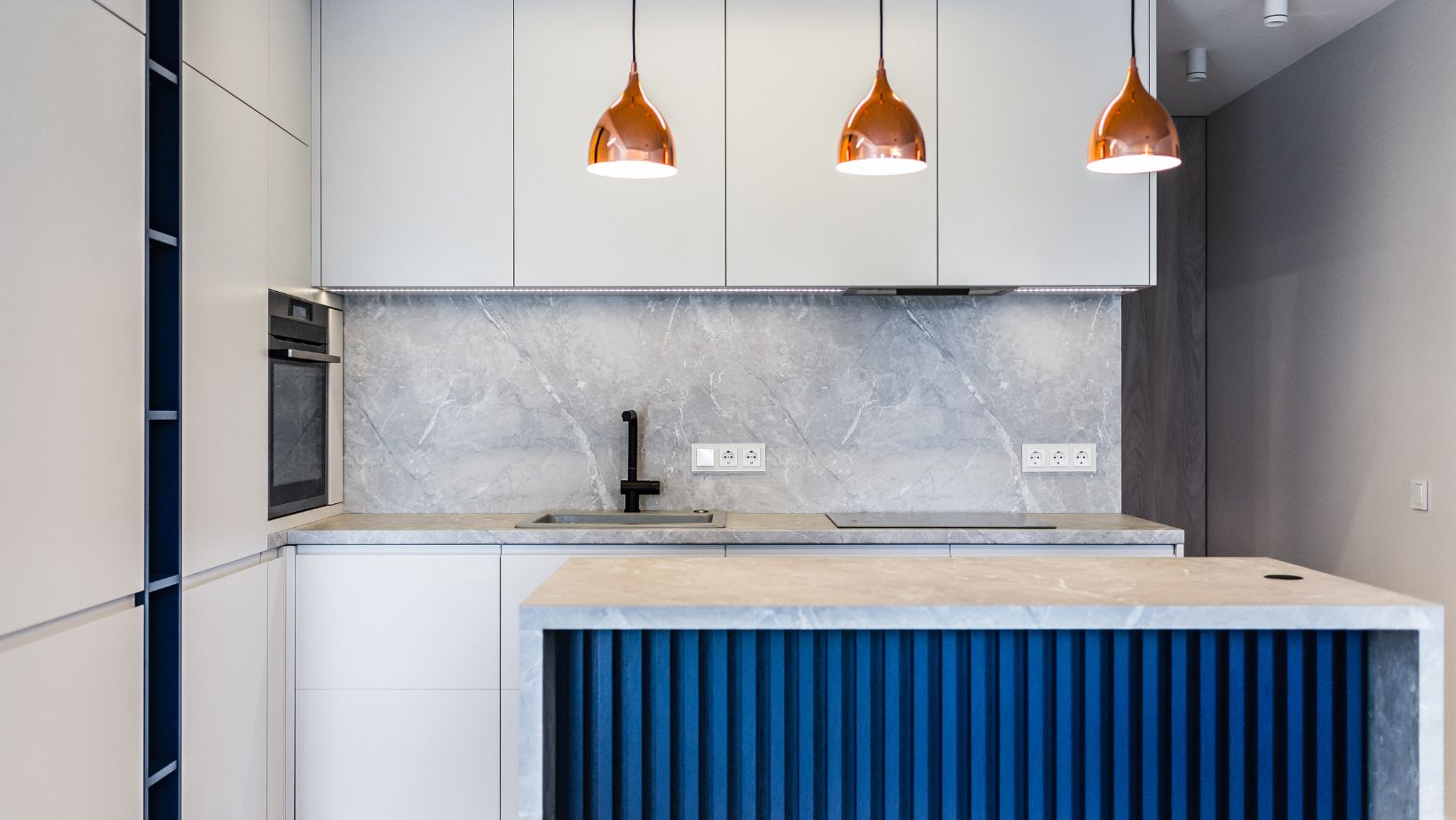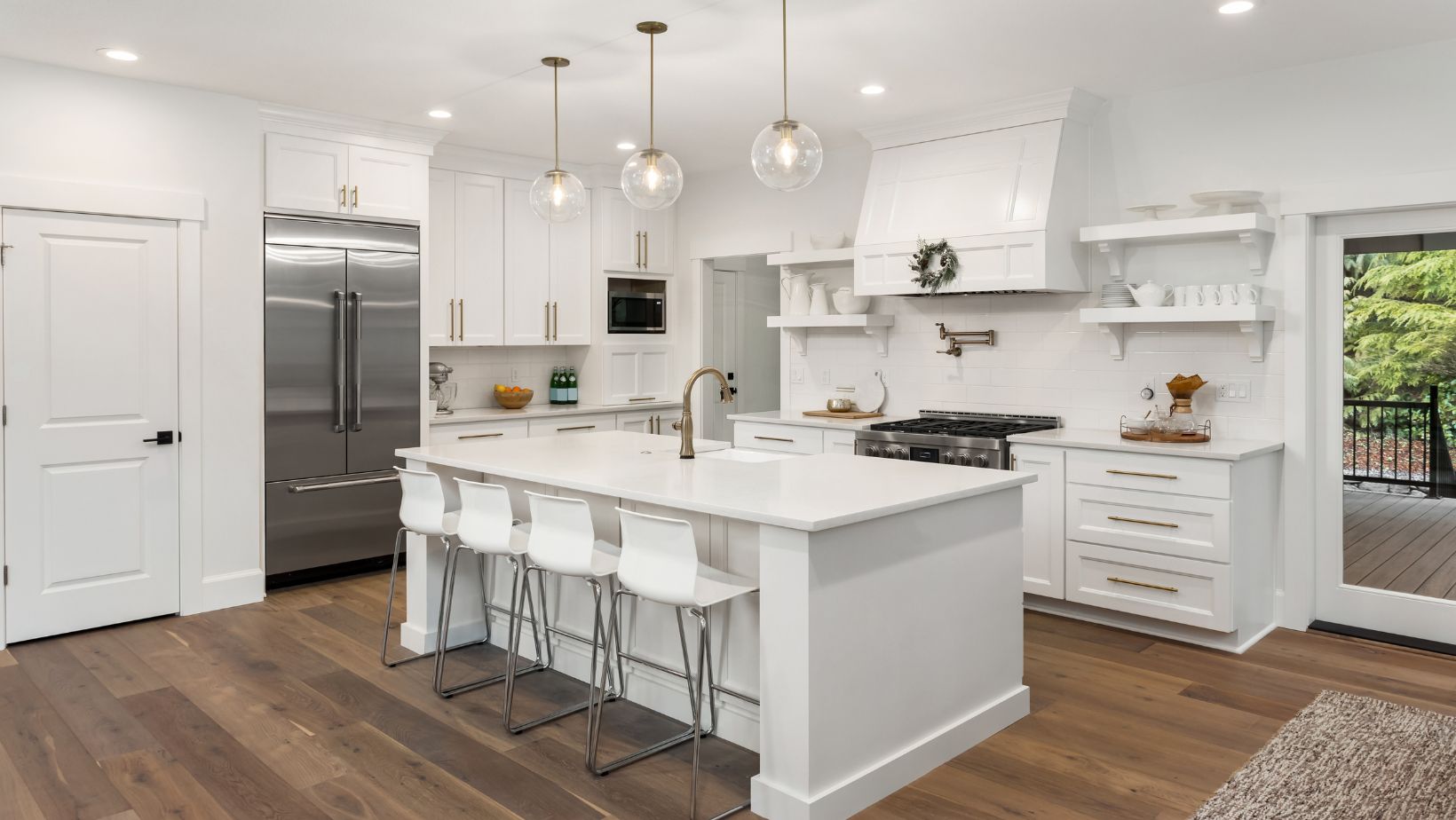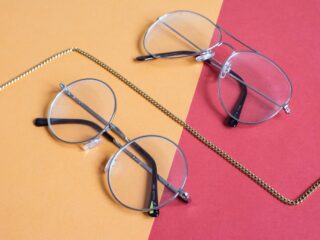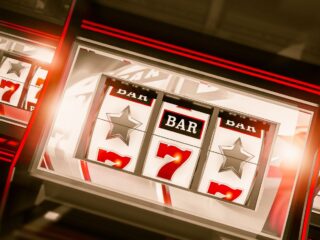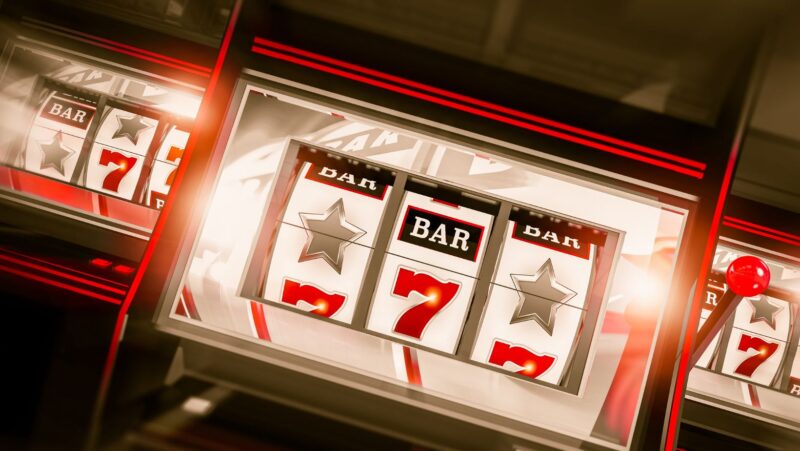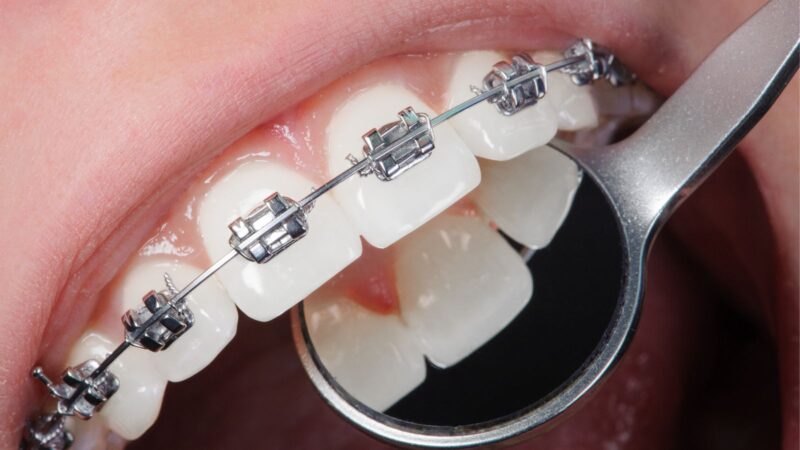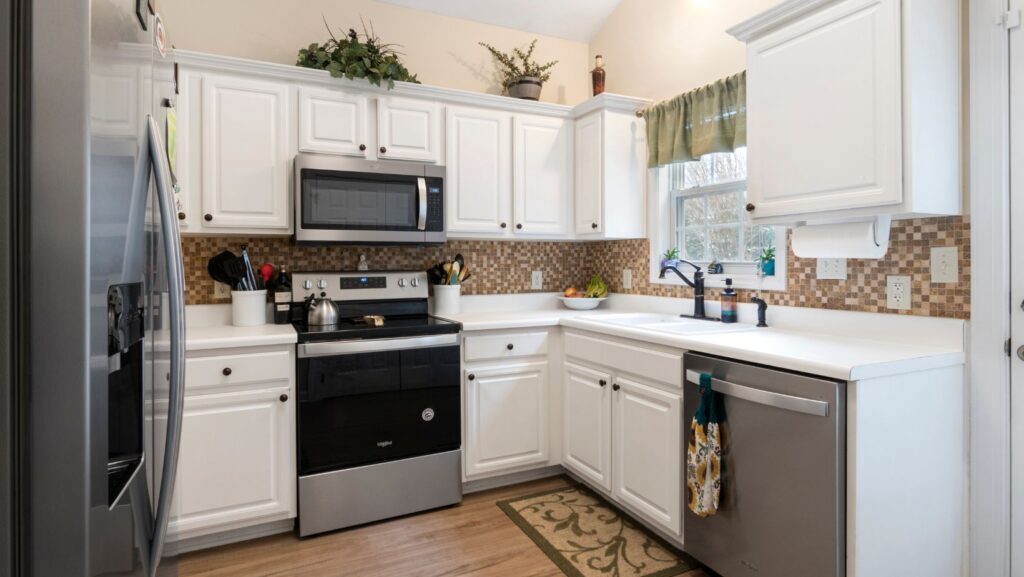
Kitchen fronts made of glass are elegant and versatile, maintaining their popularity for many years while evolving into more advanced forms. They serve as a stylish decoration for any interior, fitting seamlessly into almost all styles, from classic to high-tech. Additional attractiveness is provided by the decoration and original fittings, which are available in a wide range from modern manufacturers. What are the features of a kitchen with glass facades, and what should you know about when choosing such furniture? Also, consider the potential benefits of incorporating glass extensions into your kitchen design.
Advantages and Disadvantages of Glass Facades
Advantages:
- Aesthetic Appeal: Glass fronts for the kitchen enhance the room’s elegance and style. Transparent doors create a sense of space, lightness, and airiness, which is especially beneficial in small rooms.
- Eco-friendly: Glass is a natural material that is completely harmless to human health as it does not release toxic or harmful substances into the air.
- Ease of Use: Glass facades are easy to clean with a dry rag and spray. The only caveat is to avoid abrasive cleaners to prevent visible scratches. Installation is straightforward and can be done by following the instructions.
- Durability: Glass can withstand temperature fluctuations and high humidity, making it ideal for kitchen aprons. It is easy to clean soot and grease from glass surfaces, and it prevents the formation of fungus. Glass is also used in countertops and dining table surfaces.
- Versatile Design: Manufacturers offer a wide range of glass facade models suitable for any style. Glass can be combined with other materials like wood, plastic, and MDF.
Disadvantages:
- Fragility: Some types of glass facades lack high strength and can break into small fragments upon impact, posing injury risks. At best, cracks may form, impairing the appearance of the kitchen. Careful handling or choosing hardened glass or triplex products can mitigate this issue.
- Price: Kitchens with glass inserts are generally more expensive due to the quality and durable fittings that securely fix the glass in the frame.
- Maintenance: Glass facades require constant care as dust, grease, and stains are highly visible. Additionally, the aluminum frame may darken or tarnish over time if aggressive cleaning agents are used.
Types of Glass Structures
Glass for kitchen facades varies significantly in technical characteristics and appearance. Modern manufacturers prefer practical and durable glass models over traditional silicate window glass.
Glass Facade Designs:
- Framed: Traditionally, glass was fixed in wooden frames with glue. Modern designs use aluminum frames that hold the glass firmly and can be either narrow and almost invisible or wide. The frame can be painted to match the kitchen’s overall design.
- Frameless: These kitchens use triplex or tempered glass, making the design more expensive than framed options. The glass is held by high-quality fittings, with hinges, handles, magnets, and door closers requiring special gaskets to minimize metal-to-glass contact. Careful handling is necessary to avoid slamming doors or pulling them off the hinges.
Incorporating glass extensions can further enhance the aesthetic and functional appeal of your kitchen, providing additional space and design flexibility.

